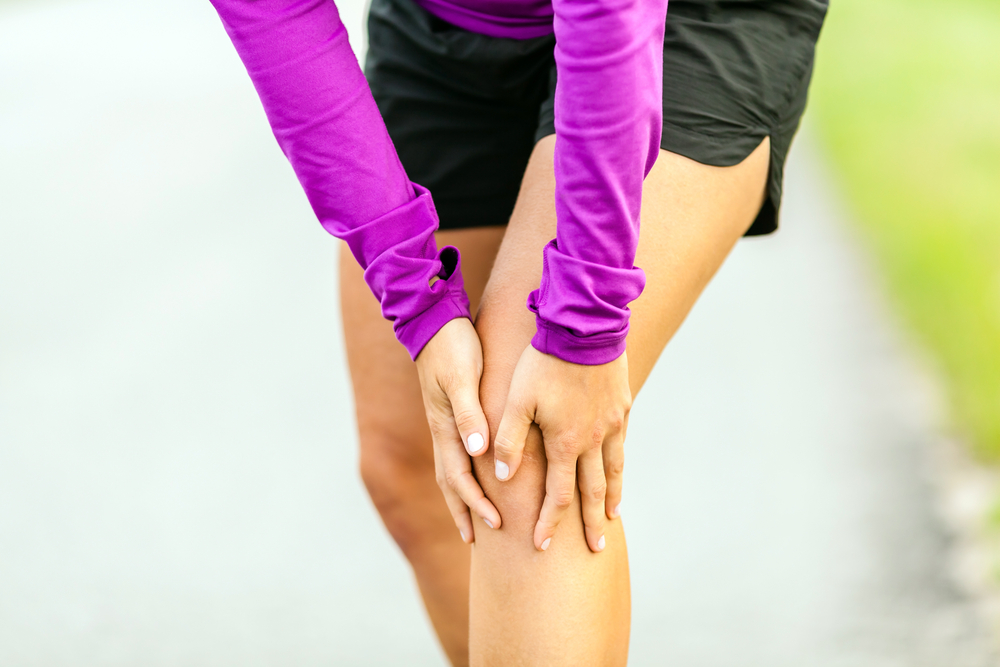Nearly 1 in 5 women over the age of 18 have knee pain. This prevalence of knee pain in women is even higher if you are older than 60. The wider shape and structure of the female pelvis predisposes women to knee injuries. Women also tend to run, walk and jump with different mechanics than men. Finally, the female hormones, such as estrogen, make your joints and ligaments looser and susceptible to injury.
Some of the contributing factors to knee pain in women are not changeable. However, other factors are under your control. Several studies have linked problems in muscle strength and coordination to knee pain in women of all ages. In particular, deficits of the hip and core muscles are more common in females than males with knee pain. Thankfully, these deficits are improved with exercise and the right exercise program will significantly reduce your knee pain.
Proven Exercises for Knee Pain in Women
A 2014 study conducted in Brazil investigated the effects of two different types of exercise programs in women with knee pain. One group of women performed 8 weeks of traditional thigh muscle strengthening exercises such as leg extensions, the leg press, and squats. The other group performed 8 weeks of core and hip muscle strengthening exercises.
These exercises focused on strengthening the hip muscles and improving control of the pelvis and trunk. Control of the pelvis and spine has been linked to knee injuries in females but these factors are often overlooked in traditional physical therapy programs.

3 months later, women who performed the hip and core exercises were experiencing less knee pain. These women also were more satisfied with their overall improvement and functioning at a higher level. It is also important to note the women who improved the most demonstrated larger improvements in knee and trunk control during a single leg squat. This proves the benefits of this type of exercise program. The following 5 videos are examples of the types of exercises that are most helpful for women with knee pain.
90/90 March
Training begins with developing an awareness and control of your pelvis and trunk in supported positions. The 90/90 March begins with a neutral spine, bracing, and diaphragmatic breathing. Elevate your legs so your hips and knees are at right angles. Maintain a neutral spine, bracing, and proper breathing as you slowly alternate lowering the heels to the floor. Gently touch the heel to the floor without relaxing.
Perform 10 to 20 slow repetitions on each side. To learn about other progressions of these types of exercises go here.
Hip Extension in Plank Position
Exercises targeting your gluteus medius and maximus are very important if you are having knee pain. Start facedown supported on your elbows in a plank position. Your trunk, hips, and knees stay in neutral alignment. Initiate the movement by lifting one leg with your knee bent. Extend your hip slightly past neutral by bringing your heel toward the ceiling. Hold this position for 2 seconds. Maintain the plank position throughout all repetitions on one side. Complete 3 sets of 8 to 12 repetitions several times per week.
If you are unable to maintain the plank position, the same exercise can be done on your hands and knees.
A common error with this exercise is to arch or overextend your spine when lifting your leg. Also, as the abdominal muscles tire, the hips may rise. Ensure you maintain a neutral trunk, hip, and knee alignment throughout the exercise. To learn about other progressions of these types of exercises go here and here.
Sitting 1-Leg Balance
Once exercises are mastered, non-weight-bearing positions progress to weight-bearing on 2- and then 1-leg. Single-leg balance on a stability ball is a great place to start this transition. Begin sitting upright on a ball with your hands on both sides of the pelvis. Maintain upright and tall throughout the exercise. Slowly extend 1 leg and hold this position for 10 seconds. Try alternating sides with each repetition. Pay special attention to minimizing any lean of the trunk as you transition between legs.
Standing Lateral Rotation
The deep rotator muscles of your hip are important because they assist with controlling rotation (twisting) of your thigh and knee. This exercise can be challenging at first. With practice, your balance and control will improve. Start by grasping a resistance band in both hands. Hold the hands close to the body. Stand on 1 leg and slowly rotate your body to the opposite side. Pause for 1 second then slowly return to the starting position. Perform 2 to 3 sets of 10 to 15 repetitions.
Pelvic Drop Exercise
With 1 leg, stand on a small step. Place your hands on the sides of your pelvis. Your knee remains straight throughout the exercise. Slowly lower your pelvis and leg down towards the floor. Lightly tap the floor and return to the starting position. This exercise targets the gluteus medius muscle and trains control of your pelvis. Most women struggle in these areas. This can be a challenging exercise because it requires adequate balance and strength of your glute muscles.
More Help for Knee Pain
Many women are plagued by persistent and nagging knee pain. However, exercise targeting your hips, pelvis, and core is a proven treatment approach. These 5 exercises are only a tiny sample of an effective physical therapy program for knee pain. Performing thigh muscle strengthening exercises alone is not enough.
Your physical therapist can perform an individual assessment and design an exercise program based on your deficiencies and goals. Manual therapy performed by your PT also enhances the effects of exercise. Contact us today to schedule an appointment with your physical therapist.

